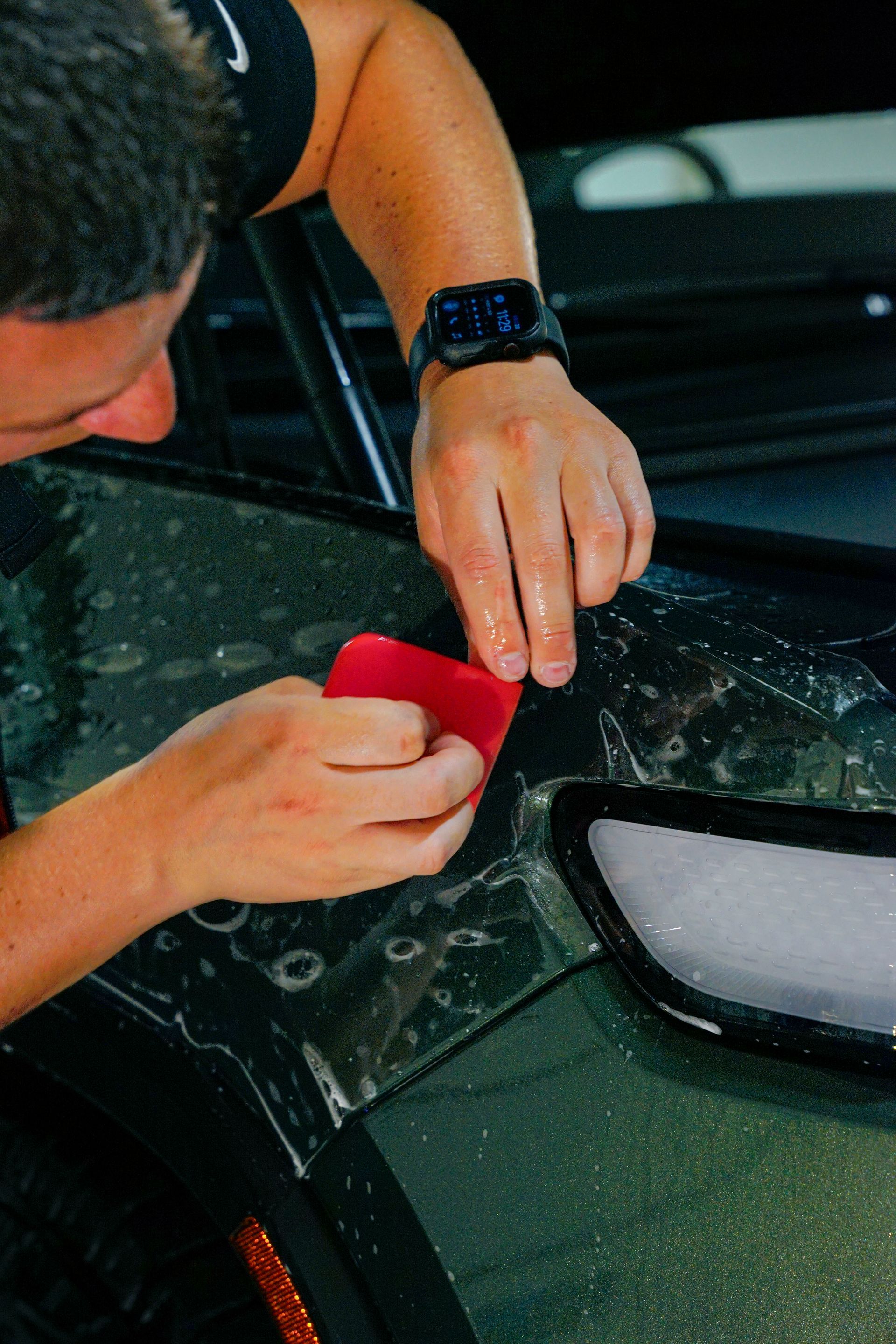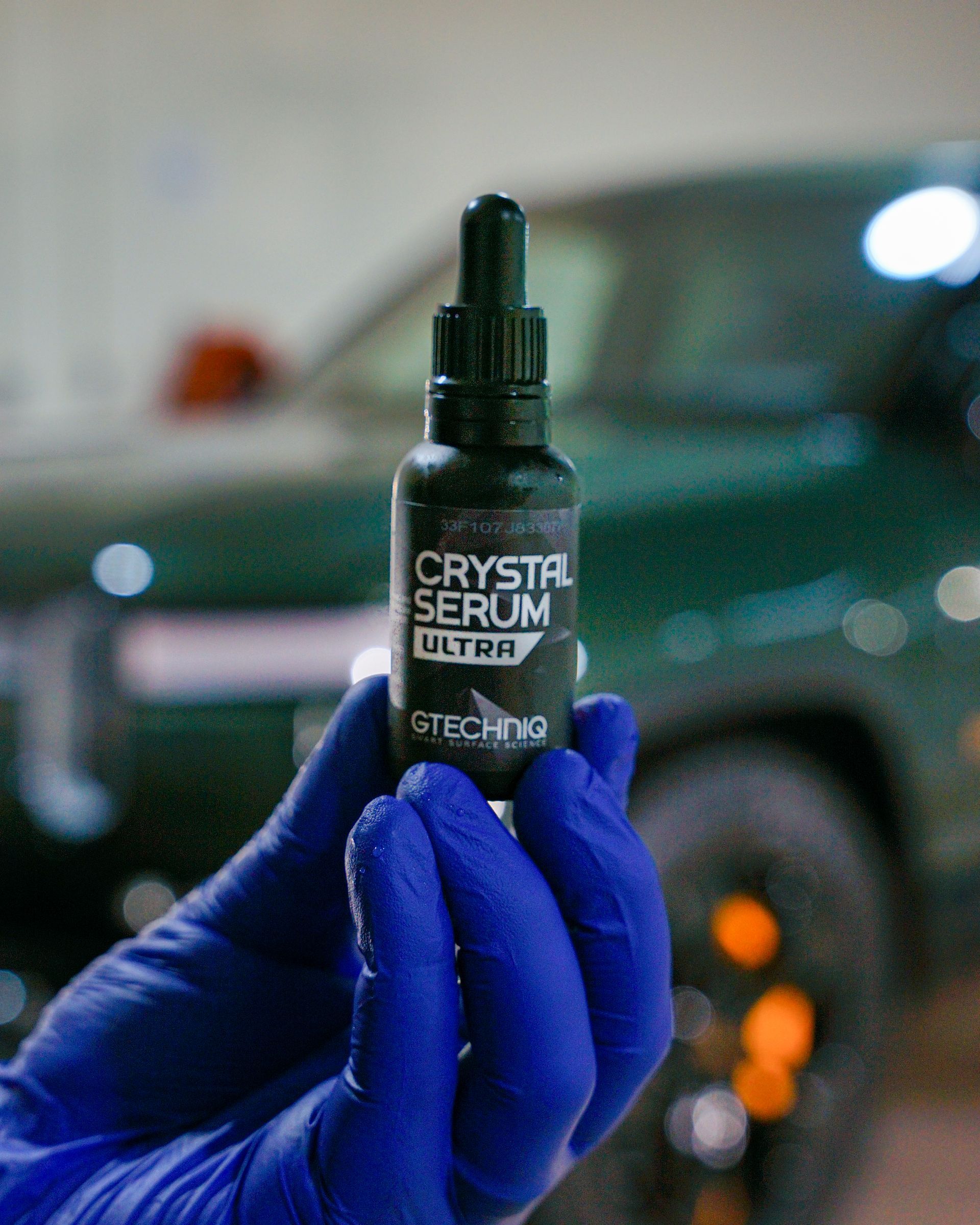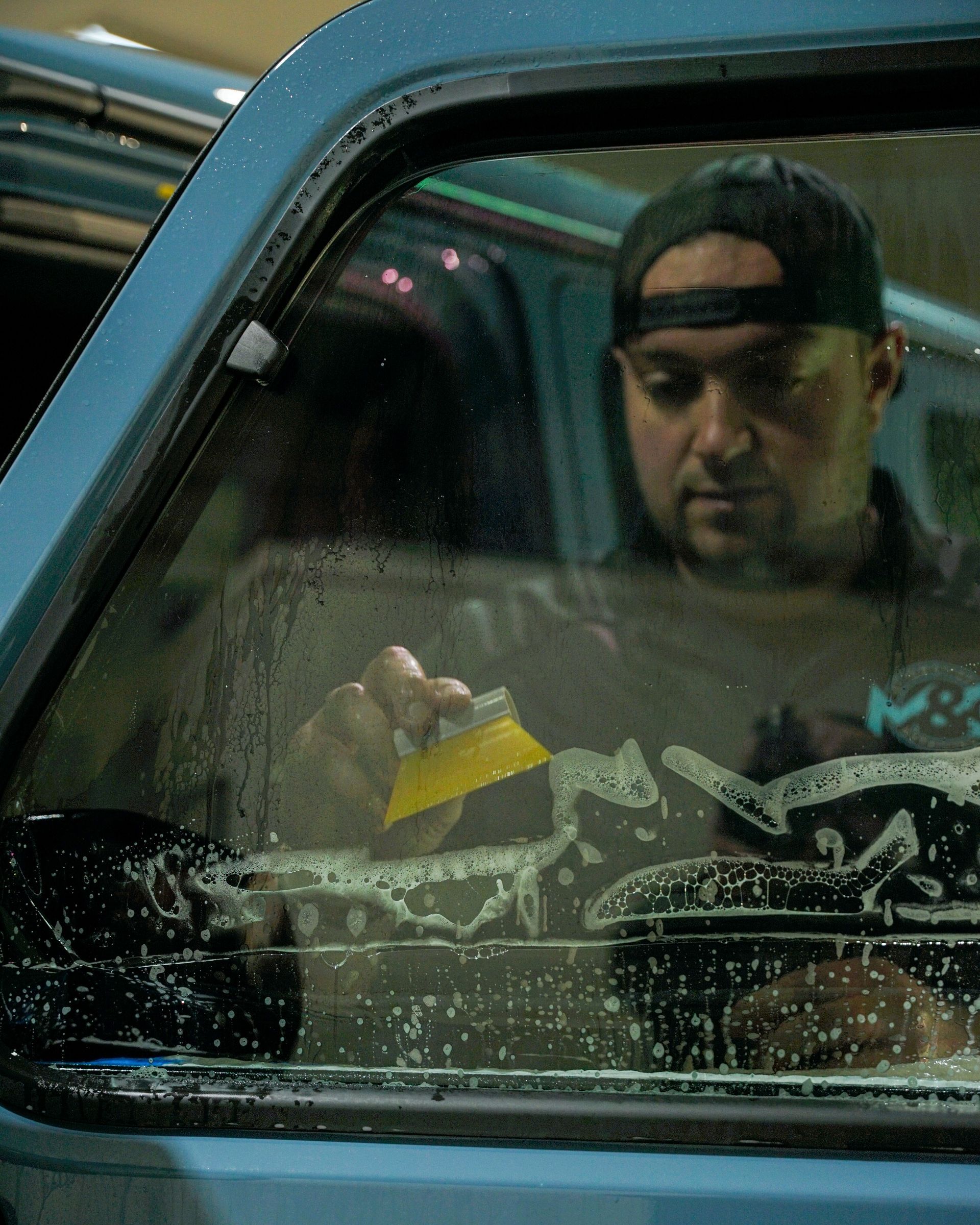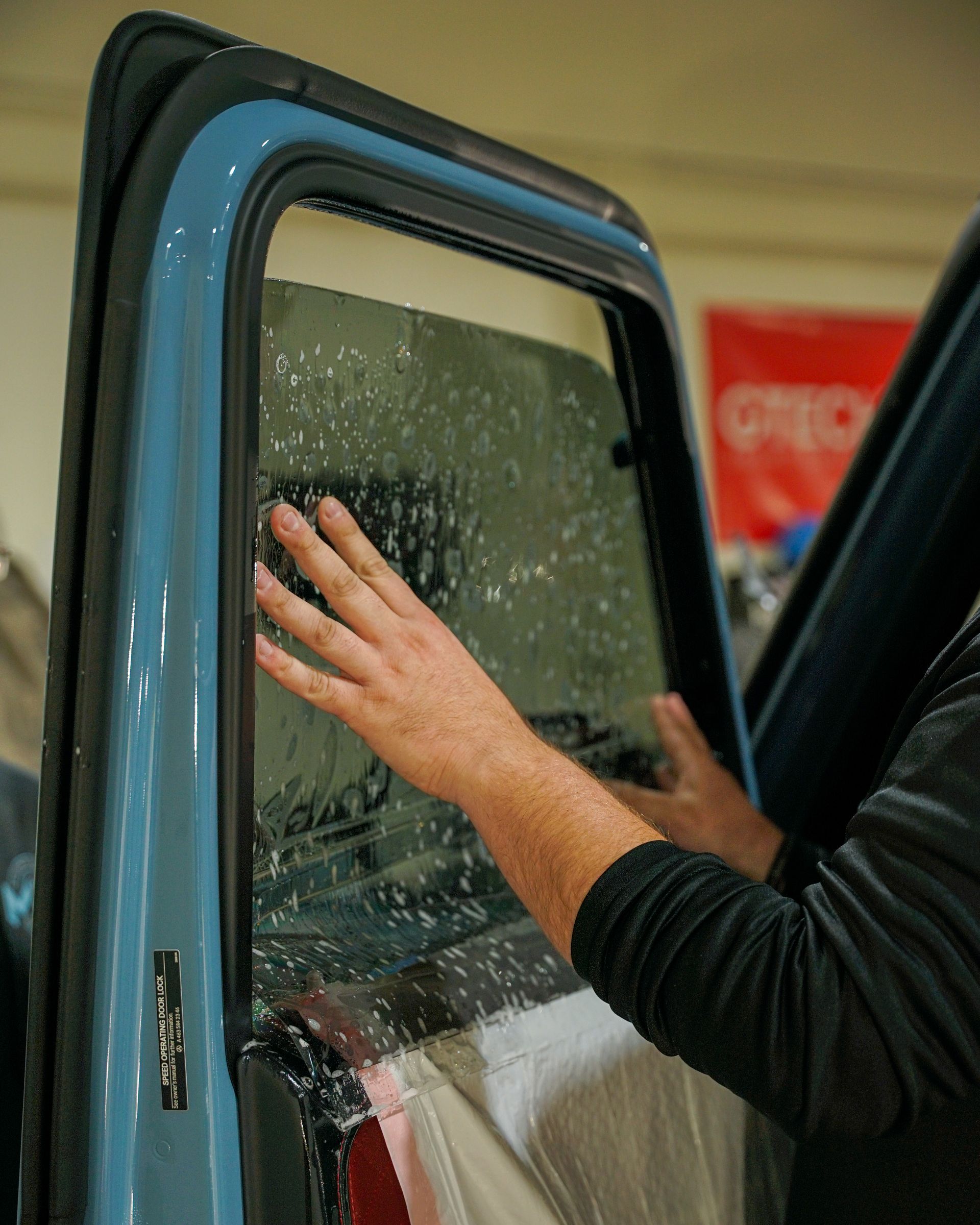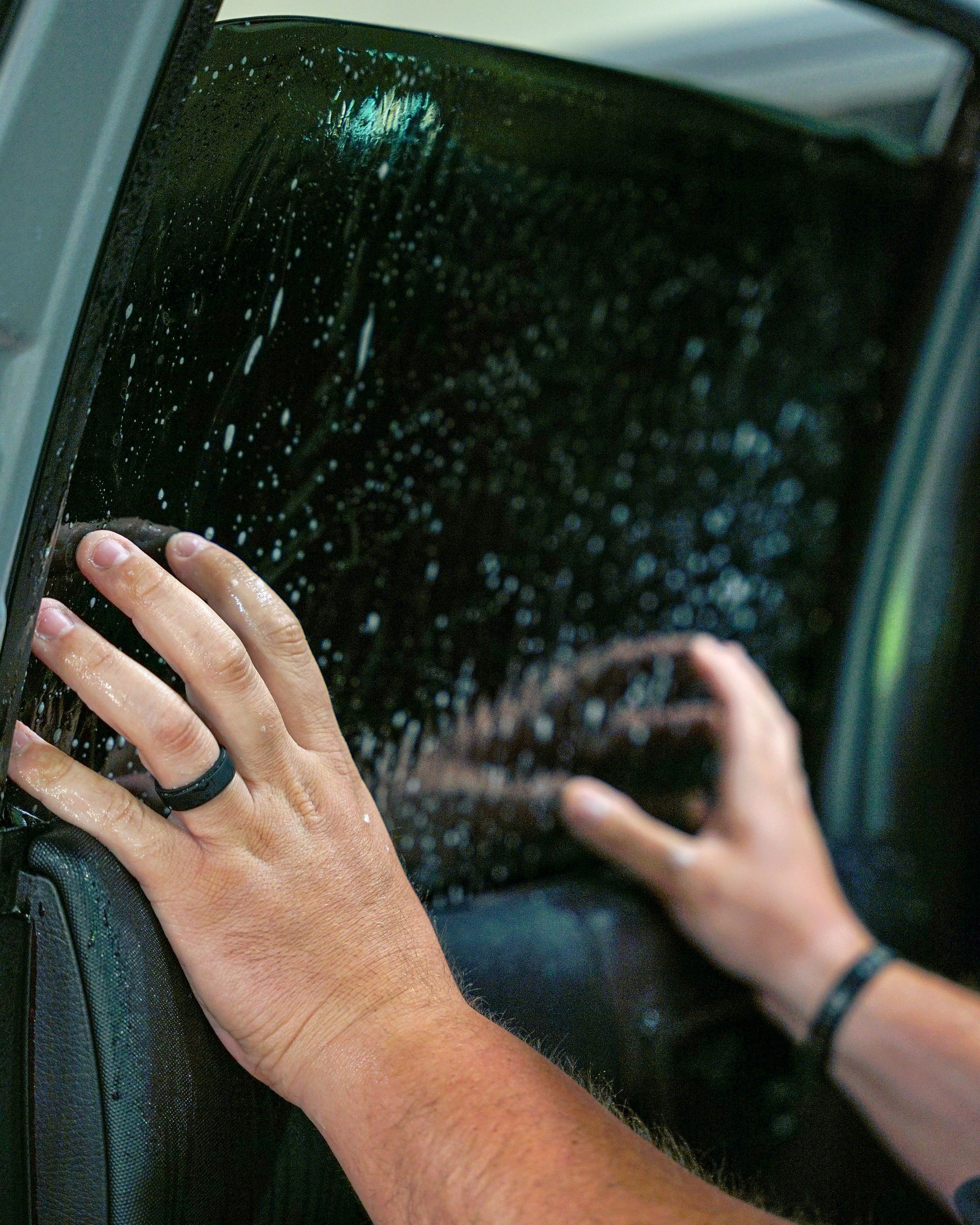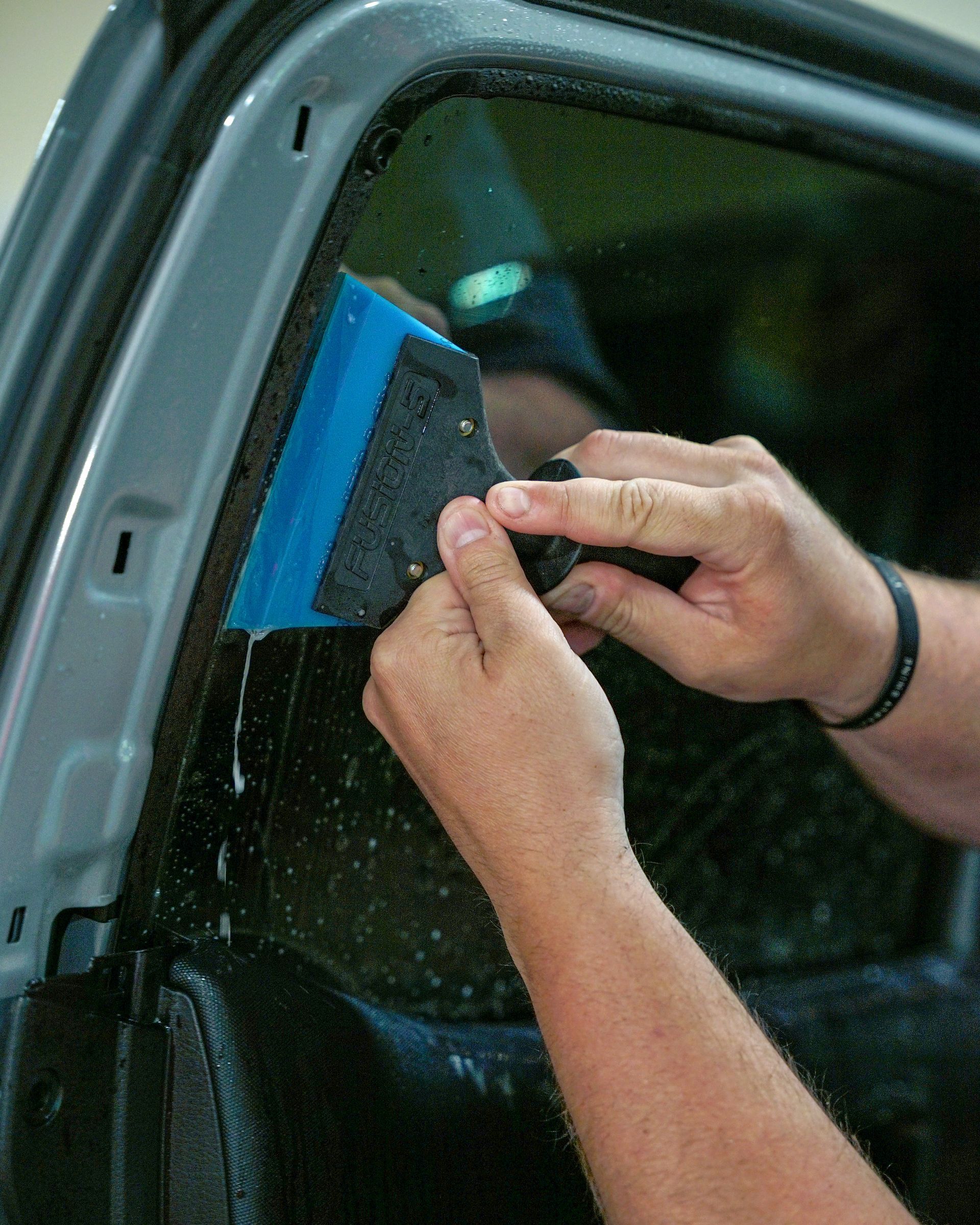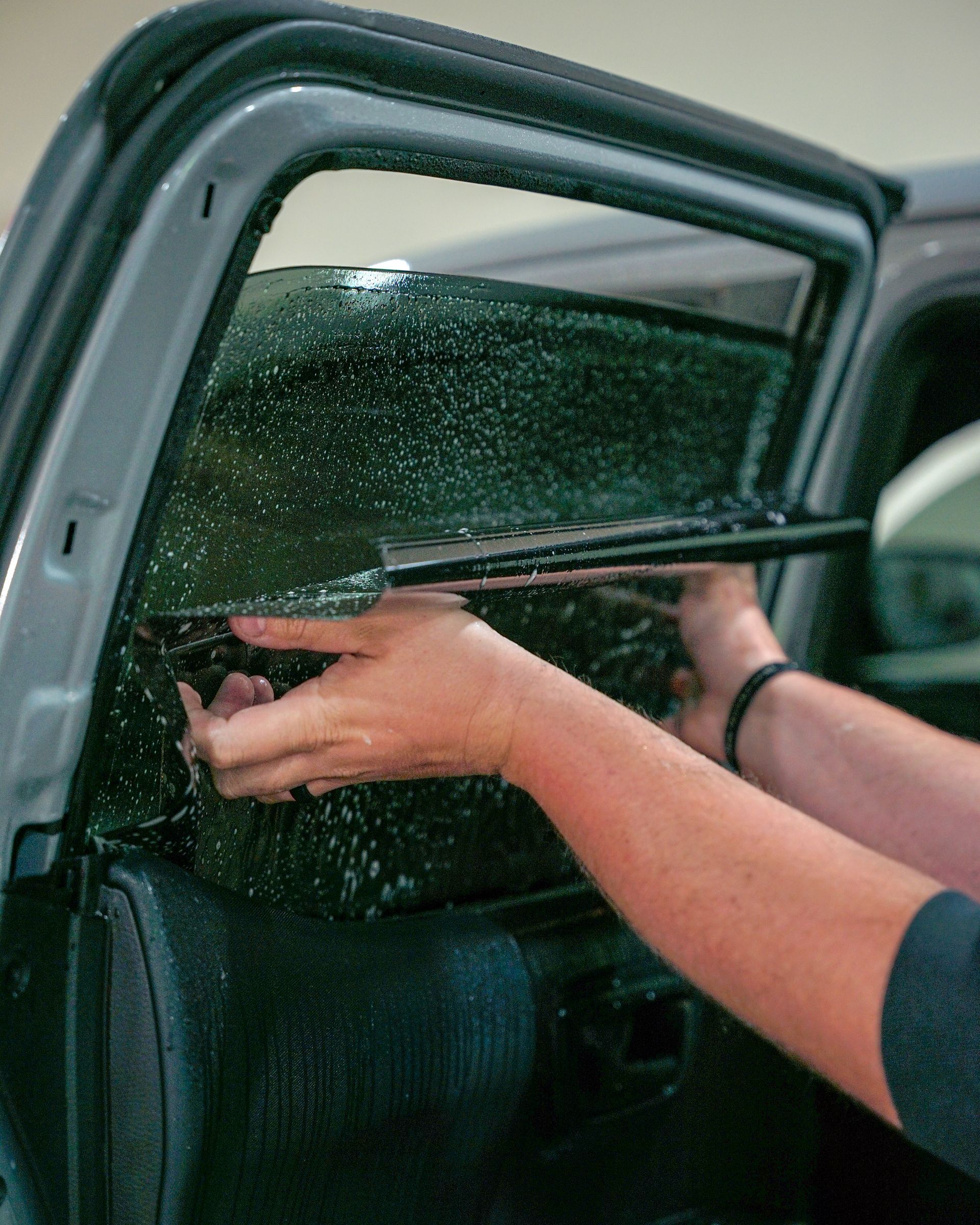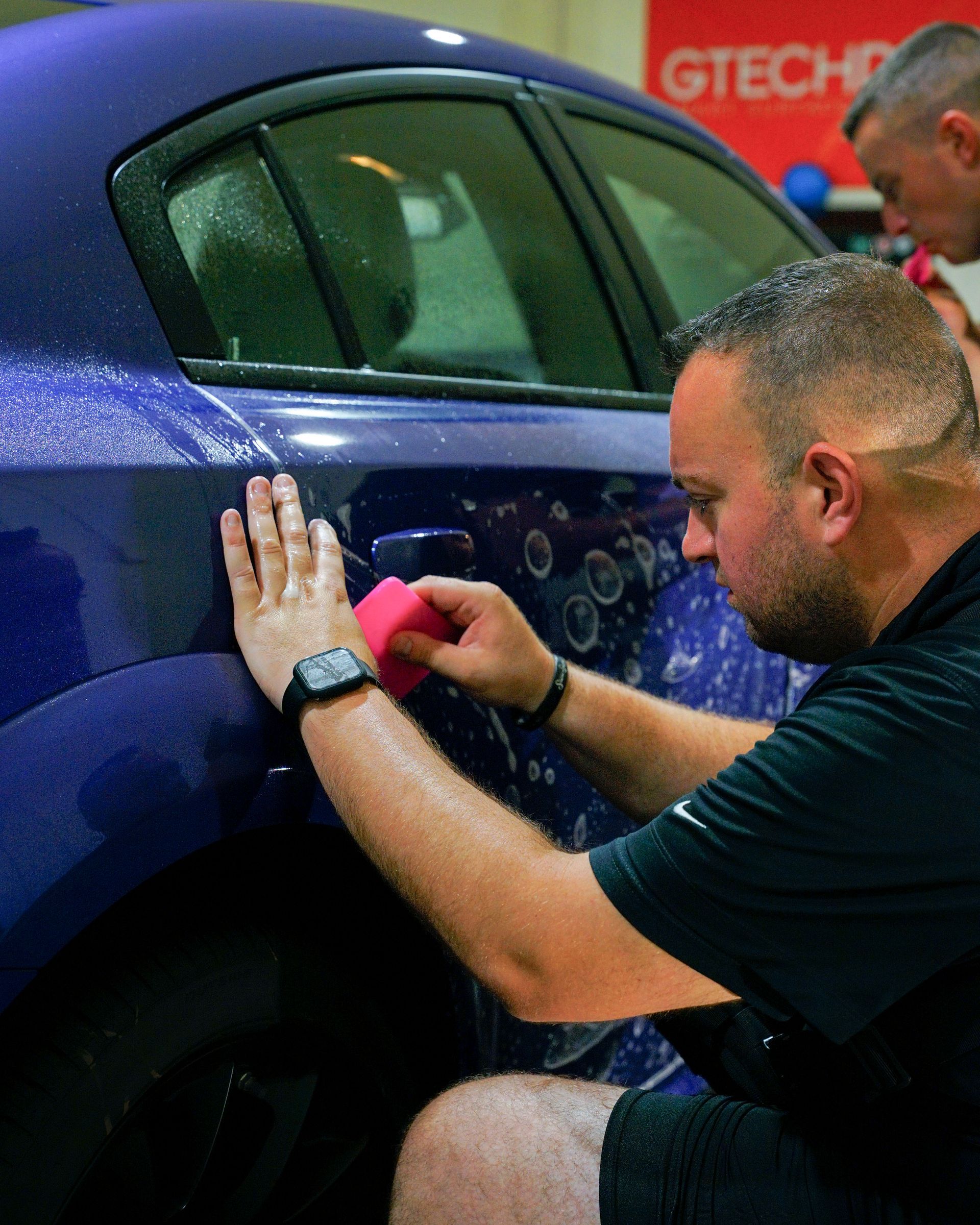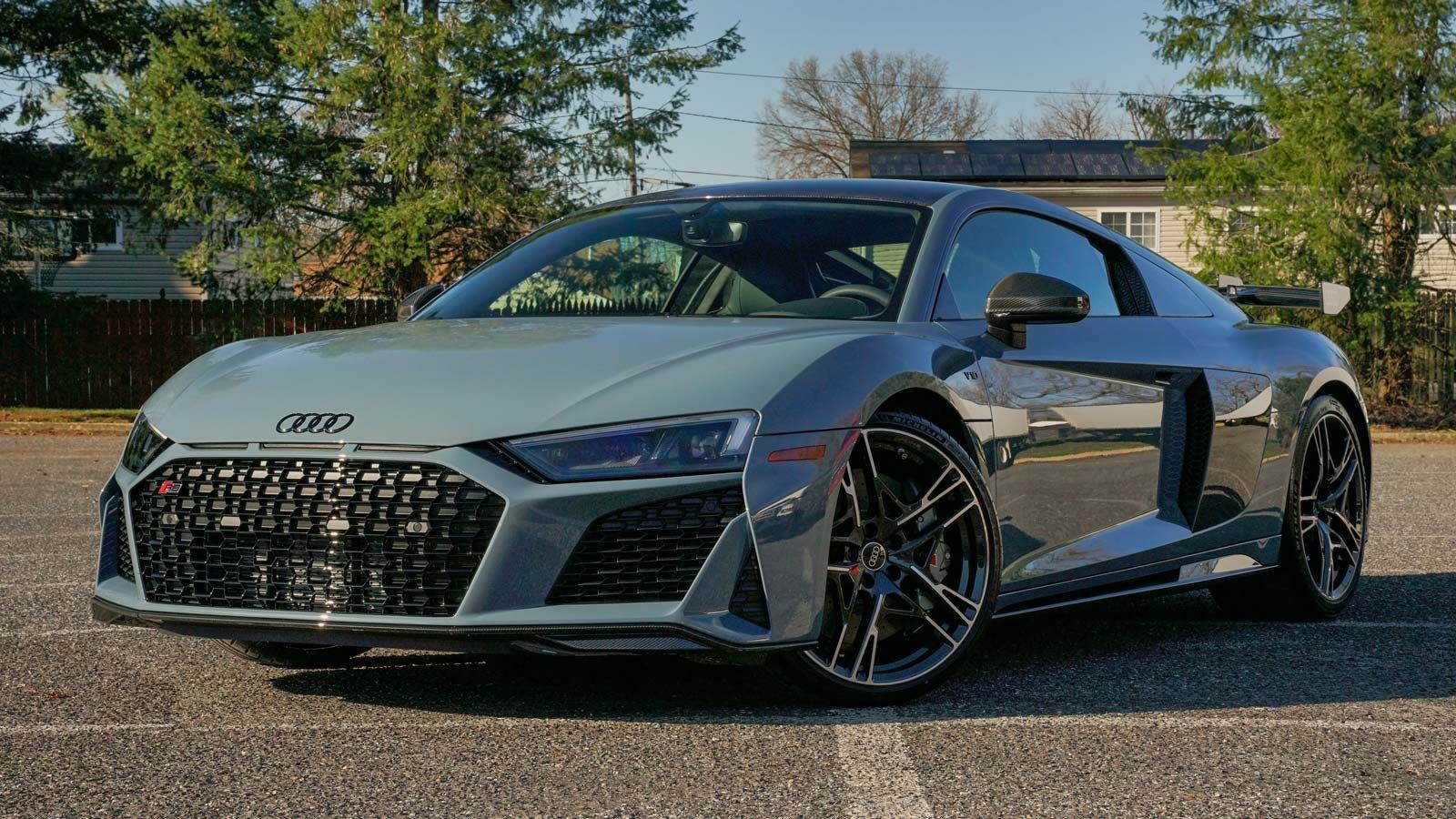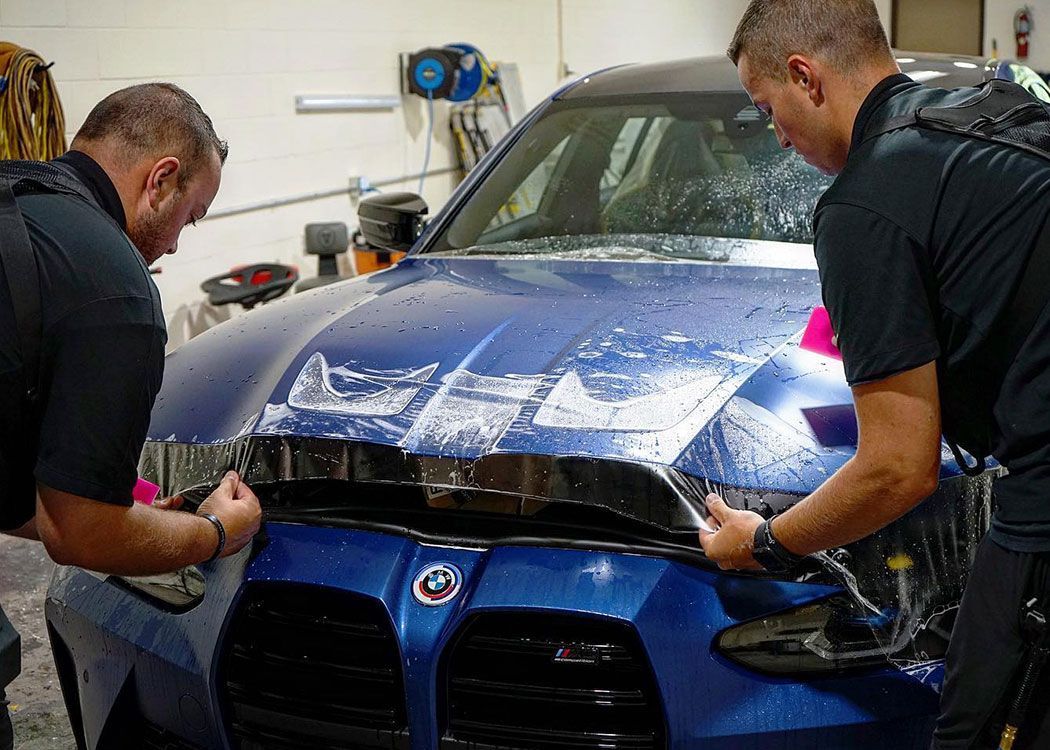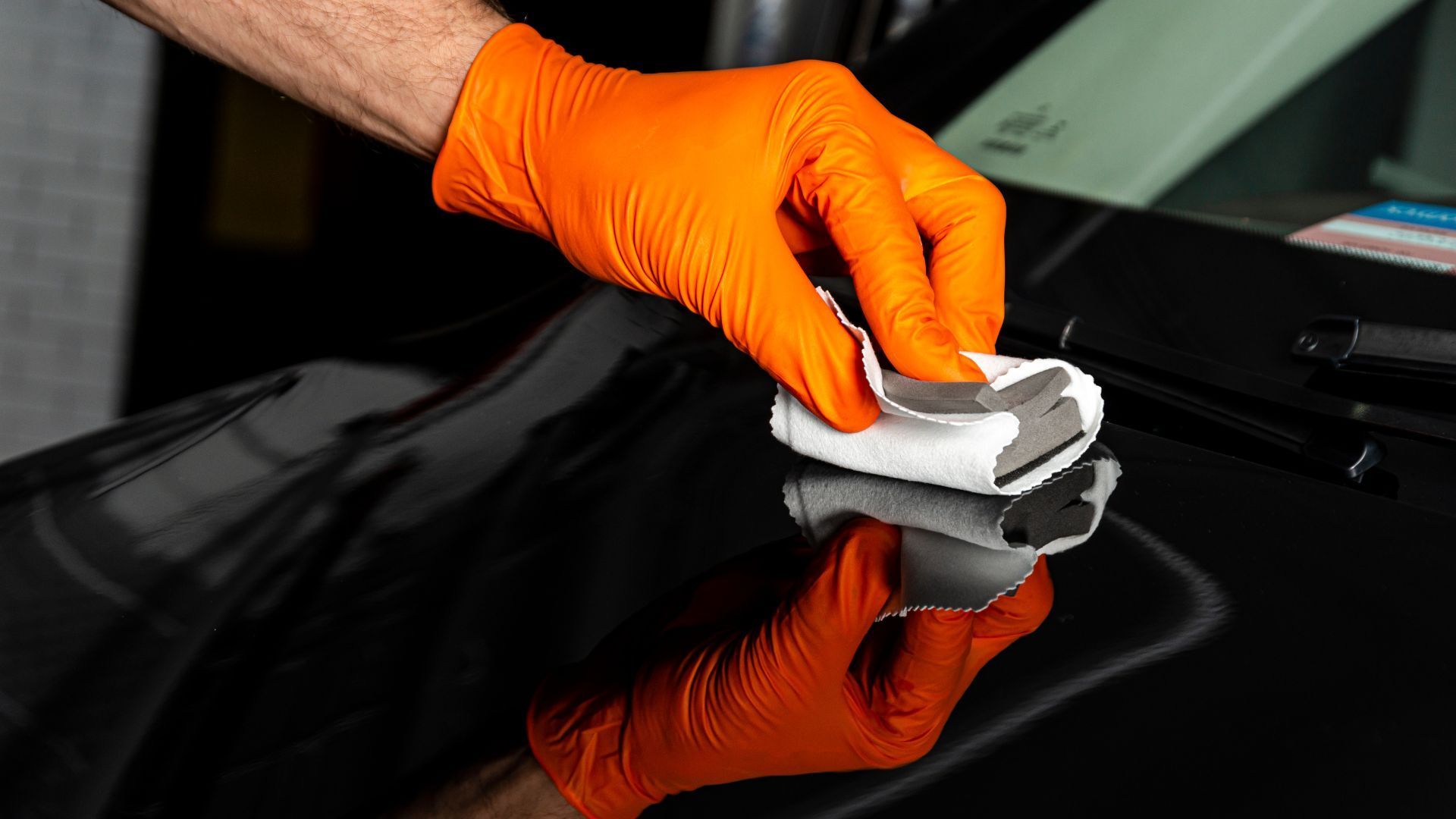The Benefits of Vehicle Window Tinting: A Comprehensive Guide
Tinting your vehicle's windows serves more than just aesthetic appeal. It's an affordable way to protect the interior of your car from fading due to sun exposure, mostly when using affordable options like dyed film. But the benefits don't stop at simply preserving the dashboard or seat materials. Imagine a scenario where a street ball accidentally hits your window or, worse, a car accident occurs. That film can hold shattered glass together, reducing the risk of injuries from flying shards.
The benefits of vehicle window tinting include heat reduction, UV protection, enhanced privacy, glare reduction, and improved aesthetics. Tinting your car windows can improve comfort, protect the interior from sun damage, and comply with local regulations while adding a touch of style to your vehicle's appearance.
Types of Window Tinting
When it comes to window tinting, there are various options to choose from, each with its own set of features and benefits. Let's delve into the different types of window tinting to comprehend what sets them apart.
- Dyed Film: Dyed film is a popular choice for many car owners due to its affordability and ability to provide good UV protection. It works by using several layers of dye between an adhesive and a protective top coating to block sunlight. This type of film is effective at reducing glare and preventing some heat from entering the vehicle, making it a practical option for those looking for a budget-friendly solution.
- Metalized Film: Metalized film uses small metallic particles embedded in the film to reflect sunlight and reduce heat. This type of tint provides excellent UV protection and effectively reduces glare. While it is more durable than dyed tint, it can interfere with electronic signals such as GPS, cell phones, and radios.
- Carbon Film: Carbon film is known for its impressive heat rejection capabilities and UV protection. Additionally, carbon film is less likely to fade compared to dyed tint, offering longevity along with its functional benefits. This type of tint does not interfere with electronic signals, making it an alluring choice for many vehicle owners.
- Ceramic Film: Ceramic window tint is considered a top-of-the-line option, providing superior heat reduction and blocking up to 99% of UV rays. Its advanced technology allows it to reject more solar heat without interfering with electronic devices in the vehicle. Although ceramic film comes at a higher price point compared to other types of tint, its exceptional performance and clarity make it a compelling choice for those prioritizing quality and longevity.
Understanding the various types of window tinting empowers you to make an informed decision based on your specific needs and priorities. Whether you prioritize affordability, heat reduction, UV protection, or signal transparency, there is a window tint option designed to meet your requirements. Each type has its own unique characteristics, so consider what matters most to you when selecting the ideal window tint for your vehicle.
Protective Tint Benefits
When it comes to safeguarding your vehicle and its occupants, window tinting offers more than just aesthetic appeal. The film functions as a shield against the harmful effects of UV rays, lessening the impact on both your car's interior and your health. The sun's UV rays can be damaging to your skin, but they are equally harsh on your vehicle's interior. Window tinting acts as a barrier, blocking up to 99% of harmful UV rays from entering the car. This protection helps prevent sun damage to your dashboard, seats, and other interior surfaces, ultimately prolonging their lifespan and maintaining the vehicle's resale value. Apart from preserving the vehicle's interior aesthetics and value, protective window tinting provides an essential safety aspect. In the unfortunate event of an accident or a break-in, windows coated with protective tint hold shattered glass together. This minimizes the risk of injuries from glass shards and adds another layer of security for you and your passengers.
Due to its shatter-resistant properties, window tinting enhances privacy and theft deterrence by concealing valuables inside the vehicle, making it less tempting for thieves. Imagine a scenario where a rock hits your car window. Without protective tinting, shattered glass would spread around, posing a significant danger to anyone inside. However, with window tinting in place, the shattered pieces remain attached to the film, preventing them from scattering within the vehicle. This not only protects you from potential injuries but also adds an extra layer of security against forced entry.
The benefits extend beyond just safety. Protective window tinting also regulates the temperature inside the vehicle. By reducing heat penetration through the windows, it ensures a more comfortable environment during hot weather. Additionally, it leads to fuel efficiency by lessening the need for air conditioning, thus contributing positively towards reduced energy consumption. From preserving your vehicle's interior to offering an added layer of safety and comfort for occupants, protective window tinting stands as a valuable investment that goes far beyond its initial cost.
Privacy Tint Advantages
Privacy tinting offers more than just a sleek, sophisticated look for your vehicle; it provides a shield of privacy and protection for you and your possessions. Privacy tinting keeps prying eyes at bay, preventing curious onlookers from peering into your car. This added level of privacy is crucial for personal security, especially when you're on the go and need to leave valuable items in your vehicle. Whether it's important documents, electronic devices, or personal belongings, privacy tinting acts as an effective deterrent against theft by concealing the interior of your car from potential thieves.
This level of privacy also extends to your everyday activities while inside the vehicle. Whether you're changing clothes in the car before a meeting or having a private conversation with a passenger, privacy tinting offers a sense of seclusion and security. You can go about your day without feeling exposed to outside scrutiny, enhancing your overall comfort and peace of mind. Imagine a scenario where you've parked your vehicle on a bustling city street. Without privacy tinting, passersby could easily peer into your car and catch a glimpse of any valuables left inside. By applying privacy tinting, you create a visual barrier that discourages potential theft and keeps your belongings out of sight.
Moreover, this extra layer of protection doesn't compromise visibility from inside the vehicle. Privacy tinting allows occupants to maintain clear visibility without the worry of outside glare or unwanted attention from pedestrians or other drivers. The reduction in external visibility doesn't hinder your ability to see outside, ensuring a safe and unobstructed view while driving. From safeguarding valuable items to maintaining a sense of privacy during daily activities inside the vehicle, privacy tinting offers an array of benefits that enhance both comfort and security for car owners.
UV Protection and Glare Reduction
When considering the perks of window tinting, UV protection emerges as a critical advantage. While most people are aware of the harm UV rays can cause to skin, they might not realize that extended exposure while driving can also be detrimental without proper precautions like window tinting. Window tinting can block up to 99% of harmful UV rays, providing crucial protection for you and your passengers.
Traveling in a vehicle for extended periods exposes occupants to higher levels of UV radiation, particularly during daylight hours. If left unprotected, this may lead to skin damage and increase the risk of developing skin cancer over time. Integrating window tinting with high UV blockage capabilities is essentially implementing a vital measure to safeguard health.
Understanding Glare Reduction
Another significant benefit of window tinting is its ability to reduce glare. Glare from sunlight and headlights from oncoming vehicles can be not only distracting but also dangerous, particularly when driving at high speeds or in adverse weather conditions. With window tinting, you can achieve glare reduction levels ranging from 70–85%. Imagine driving directly into the setting sun with no shading; the intense glare can make it nearly impossible to see the road ahead, posing a significant safety hazard for both you and others sharing the road. Window tinting significantly minimizes glare, reduces eye strain and makes nighttime driving safer and more comfortable.
By mitigating glare, window tinting ensures better visibility for the driver, creating a more comfortable and safer driving experience for everyone on board. In today's fast-paced world where we spend so much time behind the wheel, these protective features not only make practical sense but contribute significantly to overall well-being. As we've seen, beyond privacy advantages, window tinting provides indispensable protection against harmful UV rays and contributes to a more enjoyable driving experience by reducing glare.
Improving Interior Comfort
Imagine stepping into your car on a scorching hot day and finding a comfortably cool interior instead of a wave of stifling heat. That's the magic of window tinting at work. By blocking solar heat, window tinting helps regulate the temperature inside your vehicle. In fact, studies have shown that window tinting can reduce the temperature inside your vehicle by an average of 15°F, making a significant difference in creating a more comfortable environment for both short commutes and long road trips.
Now, here's how it all works: when sunlight enters through untreated windows, it warms up the air and surfaces inside the car. However, window tinting deflects, absorbs, or transmits a large portion of solar energy out of the vehicle. As a result, your car's interior remains cooler and more pleasant, as less heat accumulates inside. Not only does this save you from the discomfort of sitting in a sweltering car, but it also reduces the need for excessive use of air conditioning, leading to improved fuel efficiency. It's truly a win-win situation: a cooler cabin and savings at the gas pump.
But it's not just about comfort and fuel efficiency—window tinting also plays a crucial role in protecting your vehicle's interior. Excessive heat can take a toll on your car's upholstery, causing it to fade and deteriorate over time. With window tinting acting as a shield against solar heat, it helps preserve the condition of your car's interior surfaces, ensuring they remain vibrant and intact for longer. Imagine driving through a hot summer day without window tinting. The sun beats down on your car, turning the interior into an oven. The air conditioning struggles to keep up, guzzling more fuel to maintain a bearable temperature. Now picture the same scenario with professionally installed window tinting. The cabin maintains a pleasant temperature, the air conditioning operates more effectively, and the sun's harmful rays protect your upholstery. Window tinting doesn't just make your ride more comfortable; it helps protect your investment and contributes to lower fuel expenses—it's truly an essential addition to any vehicle in warm climates.
Enhancing Safety with Tinted Windows
Ensuring safety while driving is paramount for both the driver and passengers. Tinted windows play a crucial role in this by reducing glare from the sun and artificial light sources, which significantly improves visibility and reduces eye strain while on the road, especially during intense sunlight or nighttime driving. This reduction in glare helps prevent accidents caused by impaired visibility. Moreover, tinted windows provide shatter resistance, which is one of their most impactful safety features. In the event of an accident or impact, the tinting film helps hold the glass together, preventing it from shattering into dangerous shards that could cause harm to the occupants. This shatter resistance increases the structural integrity of the windows, acting as a protective barrier in a collision.
Privacy isn't just about keeping personal life hidden from prying eyes; it also contributes to safety. Tinted windows restrict the view into your vehicle, deterring potential thieves who often target items left in plain sight, thus adding an extra layer of security and safeguarding your belongings. Beyond enhancing privacy and reducing glare, window tinting acts as a shield against harmful UV rays that can cause damage to both the vehicle and its occupants. By blocking up to 99% of harmful UV rays, tinted windows help preserve the integrity and appearance of the vehicle's interior surfaces, like the dashboard and upholstery, ultimately ensuring its longevity.
In many ways, window tinting goes beyond merely enhancing the aesthetics of a vehicle—it actively contributes to safety and well-being. It is a multifaceted approach to ensuring a safer and more secure driving experience by mitigating potential risks associated with excessive glare, protecting against break-ins and thefts, as well as shielding against harmful UV radiation. By addressing these key safety concerns, window tinting emerges as an essential investment for those seeking to prioritize their comfort and safety while on the road. Incorporating window tinting not only enhances the aesthetics of your vehicle but also significantly contributes to safety and protection for both you and your passengers. It's a thoughtful investment that pays off in various ways.
Trusted Window Tinting Service in Mount Laurel, NJ
Looking to enhance both the style and functionality of your vehicle? Look no further than M&G Automotive Detailing, the trusted name in
window tinting services in Mount Laurel, NJ. With years of expertise and a commitment to excellence, M&G Automotive Detailing provides top-notch tinting solutions tailored to your needs. Whether you're seeking increased privacy, UV protection, or simply a sleeker look, our skilled team delivers flawless results every time. Say goodbye to glare and hello to a cooler, more comfortable drive. Trust M&G Automotive Detailing to transform your ride. Schedule your appointment today or call us at
(609) 923-3123 and experience the difference firsthand!

